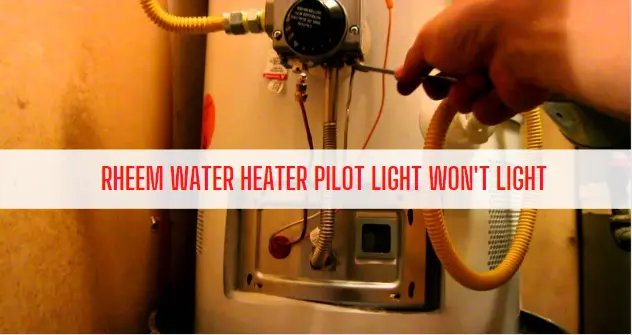Richmond Water Heater Pilot Light Won’t Stay lit
Richmond Water heater pilot light won’t stay lit due to:
- Dirty or loose igniter wire
- Gas supply issue
- Restricted pilot tube
- Bad thermocouple
- A failed limit switch
- Flammable vapor sensor screen gets plugged
- Faulty gas valve
- Defective pilot thermistor
- A tripped thermal release device
- Clogged air intake
Throughout this guideline, I will walk you through every troubleshooting step to fix the pilot light issue. Till then, keep reading.
Table of Contents
- Richmond Water Heater Pilot Light Won’t Stay Lit [10 Easy Solutions]
- How Do You Light The Pilot On A Richmond Water Heater?
- End-Note
Richmond Water Heater Pilot Light Won’t Stay Lit [10 Easy Solutions]
Your Richmond Water Heater pilot light won’t stay lit due to several reasons. These include a bad thermocouple, a tripped limit switch, plugged flammable vapor sensor, and a faulty gas valve.
Besides, bad thermistor, tripped thermal release device, and blocked air intake are other caveats that prevent the pilot light from coming on.
Below, I will break down how you can troubleshoot each of them. So, keep scrolling.
01. Dirty or Loose Igniter Wire
You make several attempts to light the pilot but fail! Sounds familiar, right? If yes, I bet the igniter wire comes loose or gets corroded. You can find the igniter wire attached to the combination gas control valve.
Disconnect the igniter wire from the wire connector. Then, plug the wire into the wire connector again. It will help remove corrosion from the wire connection and make good electric contact.
Now, it’s time to light the pilot to check for a spark. So, set the thermostat knob to Pilot and hold down the knob. While pressing down the thermostat knob, start striking the igniter button repeatedly. You can read this article to learn how to light Richmond Water Heater.
Look through the sight glass when lighting the pilot. If you can see a spark but the pilot light won’t come on, go forward to check the gas supply.
02. Issue With Gas Supply
Insufficient gas supply to the pilot will be a reason for unsteady pilot light. It actually happens when you don’t open the gas valve fully. So, verify that you turn on the gas supply fully counterclockwise.
Besides, the newly installed gas water heater may have air in the gas line. Regarding this, you should purge the air from the gas line. To purge the air from the gas line, turn the thermostat knob Off to clear out any unburned gas. Then, set the knob to Pilot, press down the knob, and start striking the igniter button. It will help you remove air from the gas line.
03. Restricted Pilot Tube
The pilot tube is made of metal. The gas will flow through the pilot tube to the burner for ignition. If the pilot tube gets restricted by debris, no gas will flow. As a result, you can’t light the pilot.
Clean the pilot tube to release the dirt buildup from the pilot tube. You can wire a thin piece of wire to clean the pilot tube. Then, relight the pilot.
04. Thermocouple Goes Bad
A bad thermocouple is one of the main culprits that prevent the pilot light from staying lit. Besides, you can’t light the pilot if the thermocouple gets dirty or bent.
Testing the thermocouple electrically, you can easily determine whether the thermocouple gets bad or not.
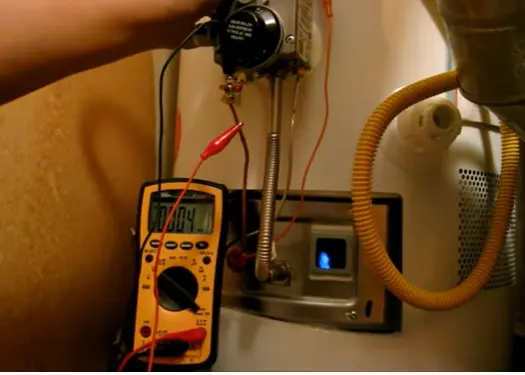
First off, use an adjustable wrench to remove the thermocouple from the gas control valve.
Secondly, grab a multimeter and set it to the Volt DC option. Now, attach the red wire to the copper and the black one to the end of the thermocouple. Set the gas valve to pilot and hold down the pilot button.
You can find the voltage starts rising as the thermocouple heats up. A healthy thermocouple should read 20 millivolts. If you don’t get this reading, you must replace the thermocouple.
How To Fix:
To replace the thermocouple, you should remove the burner assembly out of the unit. So, make sure you turn the gas supply off to your water heater.
Then, remove other connections like the pilot line and the gas line from the gas valve. Finally, pull out the burner assembly from the unit. Locate the thermocouple and ensure it’s free from dirt & debris.
If it’s at fault, remove the thermocouple from the burner assembly. Then, get a new thermocouple and install it. Now, assemble the burner again. Before replacing the gas burner into its place, ensure the thermal release device is intact. If it gets broken, you can’t light the pilot.
Also, clean the combustion chamber area. Otherwise, it will cause the pilot light to not come on. Finally, put the burner assembly back into the unit and connect all the lines to the gas control valve you unhooked.
05. A Failed Limit Switch
The limit switch on a water heater is a built-in safety feature. It will shut the water heater off when it senses too hot water or the temperature rises above 180 degrees F. Therefore, bad heating elements, loose wiring, and bad thermostat are some caveats that cause the limit switch to trip. If the limit switch gets tripped, the pilot light won’t come on.
How To Fix:
I highly recommend you check the continuity of the limit switch. Don’t forget to press the limit switch in before testing it. If you are not electrically inclined, it would be best to hire a professional to inspect the limit switch and replace it if needed.
06. Flammable Vapor Screen Gets Plugged
Most 0ften times, everyone overlooks the flammable vapor screen if they encounter the pilot light issues. But it can also be a reason behind this problem. A plugged or clogged screen prevents sufficient amounts of combustion air from going into the combustion chamber. And without air or oxygen, it’s impossible to light the pilot.
How To Fix:
Just clean the screen and reinstall it. Though it is pretty straightforward to tidy up the screen, you can find it a bit difficult to clean the rear. Once you clean the screen, light the pilot maintaining the manual guideline. If the pilot light still won’t come on, you should hire a professional.
07. Faulty Gas Valve
If the limit switch is okay and the thermocouple doesn’t get bad, I bet the gas control valve is at fault. A defective gas control valve can’t supply the right amount of fuel to the combustion chamber. And without sufficient gas supply, you can’t light the pilot.
How To Fix:
Replacing the gas control valve is the only solution to fix the pilot light issues. Fortunately, I broke down the step-by-step guide on changing the gas valve in this article: Richmond Water Heater Gas Valve Problems. So, check out that article and make a replacement successfully.
08. Pilot Thermistor Is Bad
A bad pilot thermistor can also cause the pilot light to go out. You can easily detect if the thermistor goes bad. Turn the gas on, and hold down the pilot light button. Then, light the fire and press the button for another 10-20 seconds. If the pilot light goes out when releasing the button, I am pretty much sure the pilot thermistor is at fault.
How To Fix:
Fortunately, the pilot thermistor is a cheap replacement. Just get a new one and install it. If you don’t know how to replace this part, call a professional.
09. A Tripped Thermal Release Device
Every gas water heater, including the Richmond Water Heater, has a thermal release device. You can find this device in the combustion chamber. Once you remove the burner assembly, you can see it right behind it.
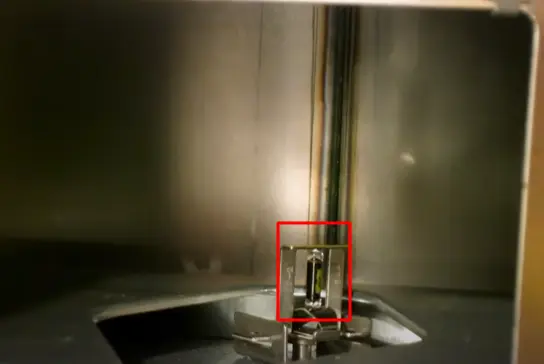
Because of the thermal resistance device, the water heater can breathe. The air makes its way through the vents and oxygen goes into the combustion chamber. And the flame will be there where the burner is.
If the thermal resistance device gets broken, the little glass bulb will pop. When the little pin comes through, it closes the vent and your heater can’t breathe. As a result, the pilot light won’t stay lit anymore.
Igniting paint or stain fumes can cause the thermal resistance device to trip.
How To Fix:
You must replace the broken thermal release device to solve the pilot light issue. I recommend you watch the following tutorial for what to look for if you want to do it yourself.
Alternatively, you can hire a professional plumber to do this replacement for you. In this case, you may need to spend $150 to $200 including the part and labor costs.
10. Blocked Air Intake
Gas water heaters like the Richmond or others have an air intake screen. The air goes through the screen into the combustion chamber and helps the pilot light to stay lit. Without sufficient oxygen, you can’t light the pilot. And a blocked air intake means air can’t pass through it. As a result, the pilot light won’t come on.
How To Fix:
Unblocking the air intake of your water heater will be a pain in the ass. You need to pull the burner out and clean the air intake screen from inside. You can use a shop-vac to blow away dirt and debris from the combustion chamber as well as the air intake screen.
Either way, you can use a bristle brush to clean around the water heater. Also, make sure you clean the base of the water heater as well.
How Do You Light The Pilot On A Richmond Water Heater?
To light the pilot on a Richmond Water Heater, try these steps:
- Read the safety information first labeled on the tank.
- Set the gas control/thermostat knob counterclockwise to the Off position.
- Leave the water heater for five minutes to clear out unburned gasses.
- Move the thermostat knob to Pilot. Press down the thermostat knob and start striking the igniter button simultaneously.
- Once the pilot light comes on, release the thermostat knob.
- Move the thermostat knob to your desired temperature setting.
End-Note
Every homeowner encounters the pilot light issues on their water heater. Luckily, I mentioned all the possible reasons behind this problem. So, what you need to do next is to follow the troubleshooting steps and figure out the source that keeps the pilot light from staying lit. Then, take the proper steps to solve the problem. Good Luck!
Read Also:

Eric Alvarez is the head of content on LilDutchUncle.Com. He is an HVAC guy based in El Paso, Texas, United States. He obtained his Bachelor of Science degree from the University Of Texas at El Paso. Years of experience in the HVAC field have taught him many lessons, not the least of which is that the value of quality and knowledge far exceeds any promised initial savings. He has a good standing reputation for superior skills in heating, air conditioning, hot water tanks, and indoor air quality systems.

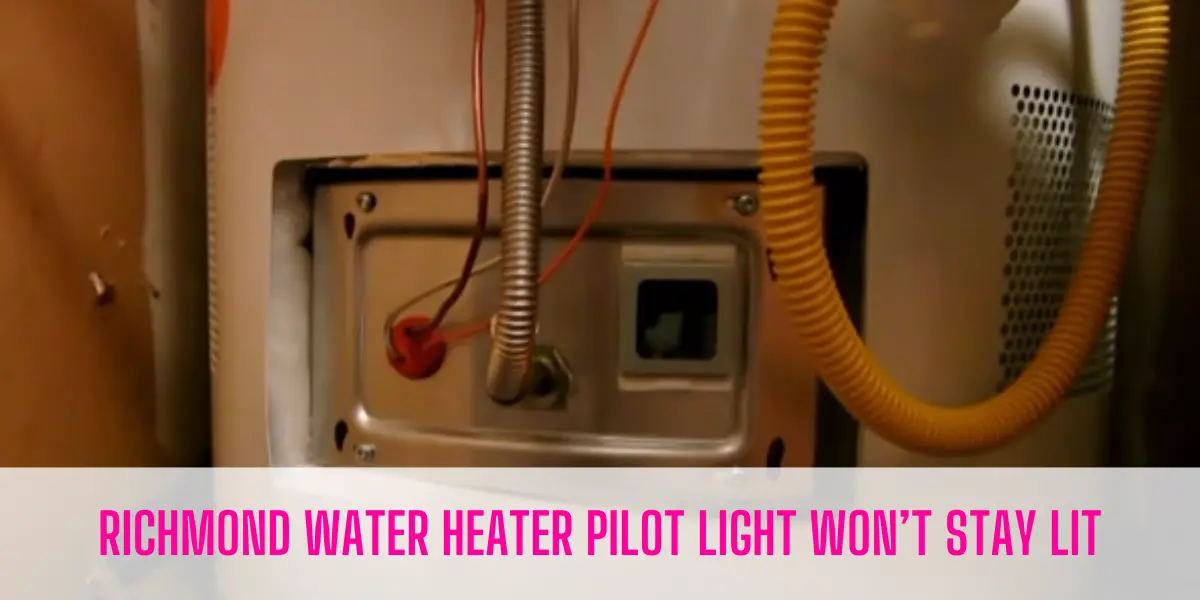
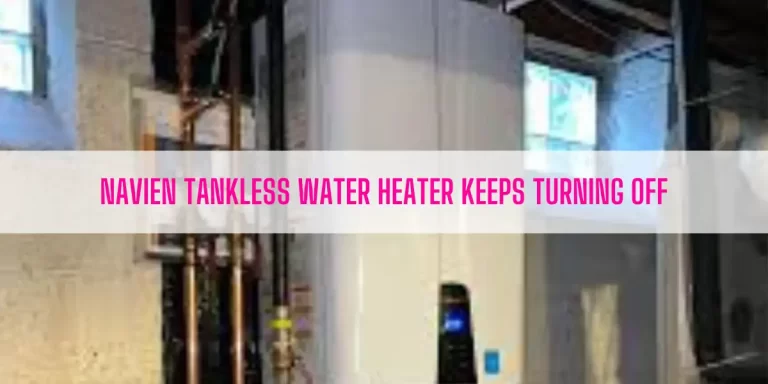
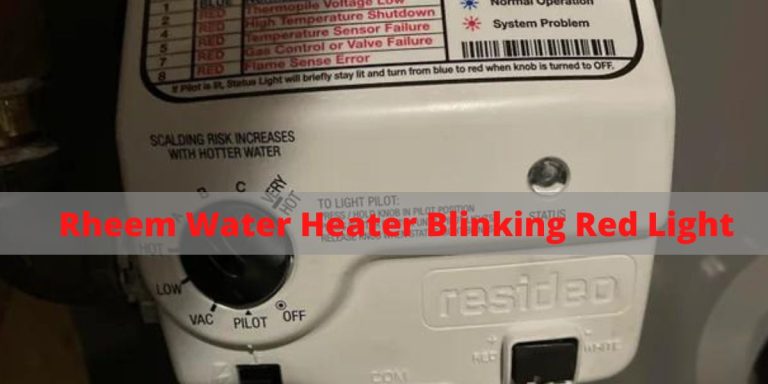

![Navien Tankless Water Heater Problems [11 Easy Solutions]](https://lildutchuncle.com/wp-content/uploads/2022/09/Navien-Tankless-Water-Heater-Problems-768x384.webp)
![Rheem Tankless Water Heater Code 12 (Flame Failure)- [Solved!]](https://lildutchuncle.com/wp-content/uploads/2022/04/how-To-Fix-Rheem-Tankless-Water-heater-Code-12-768x407.jpg)
